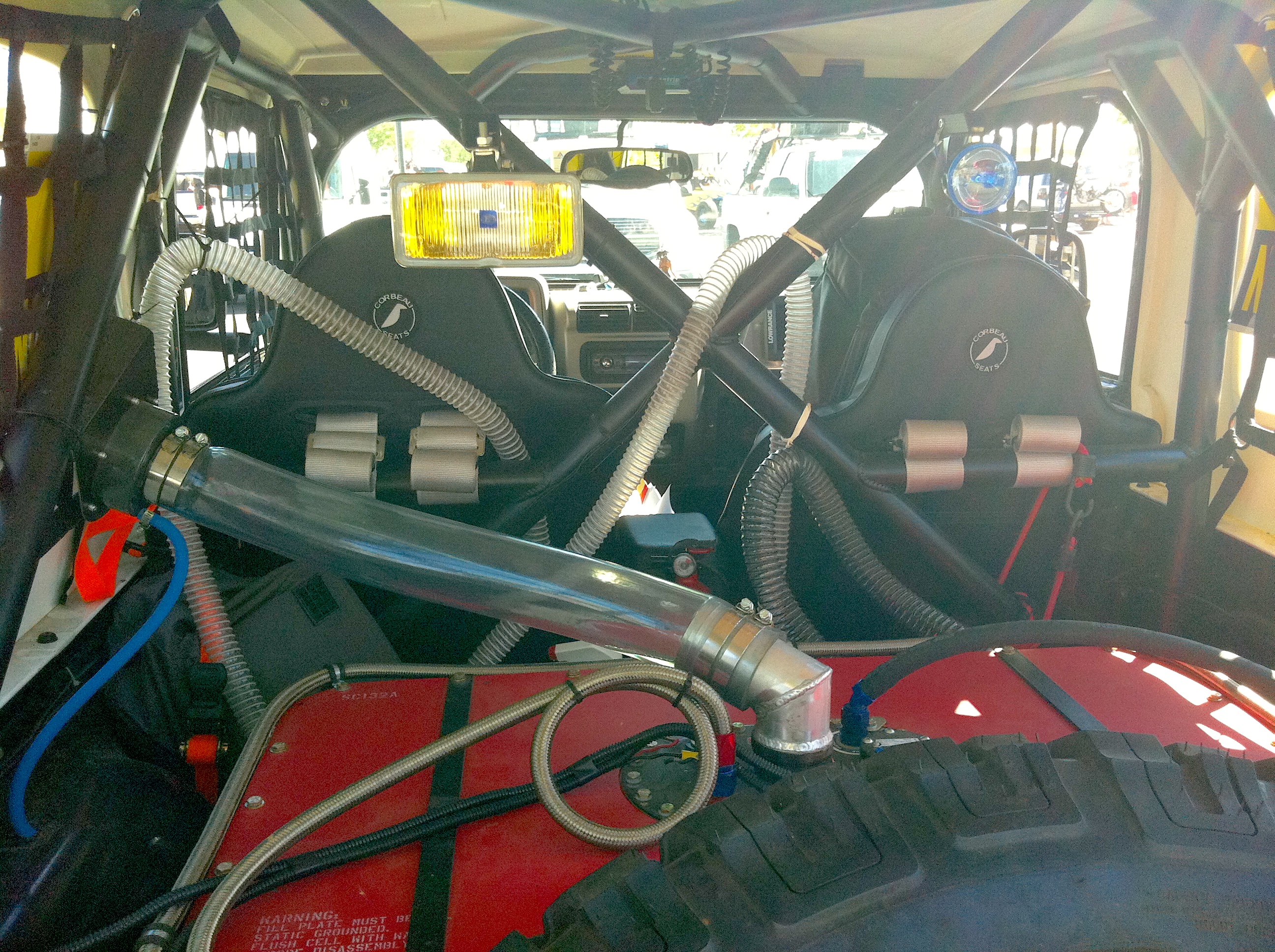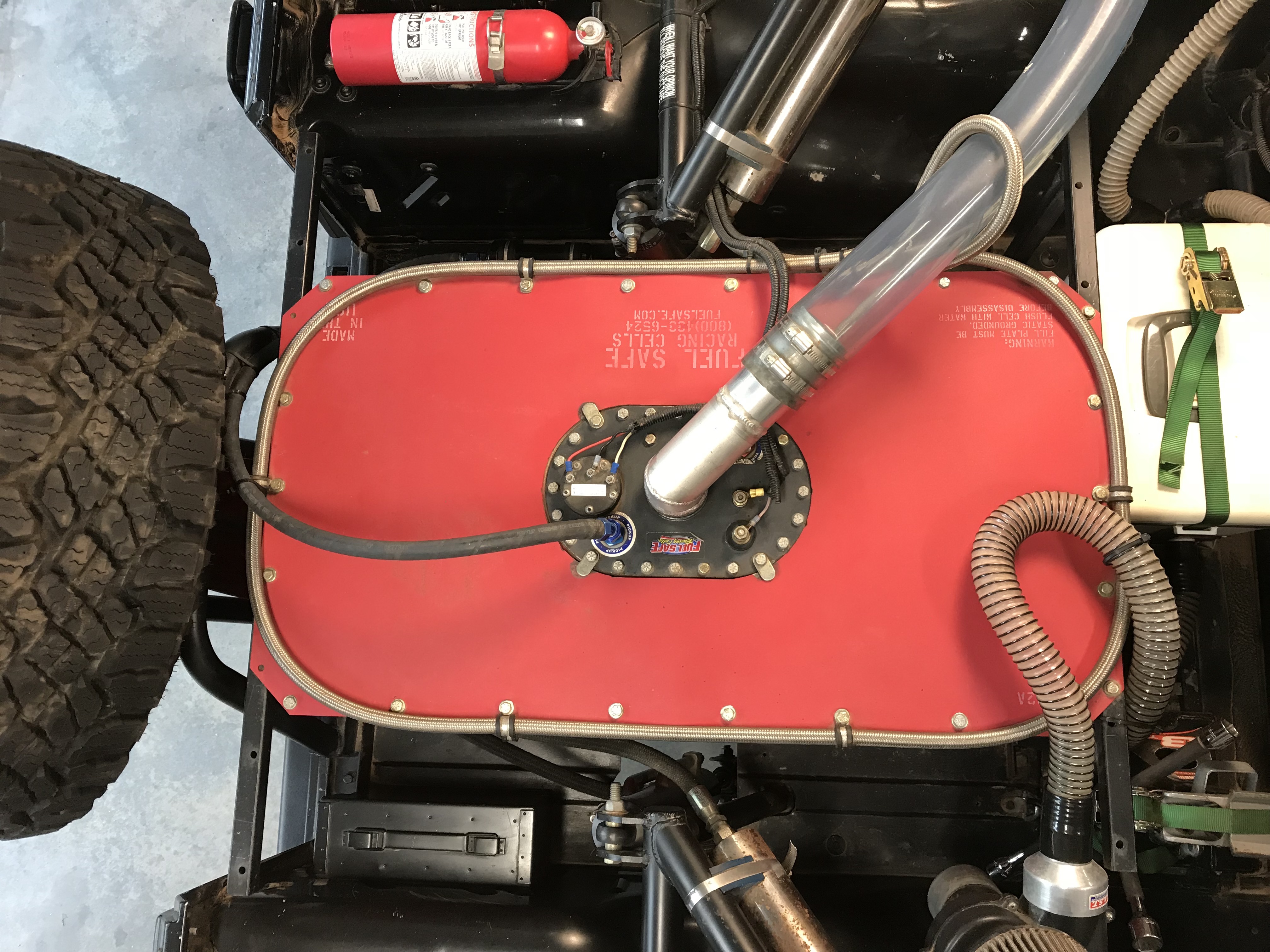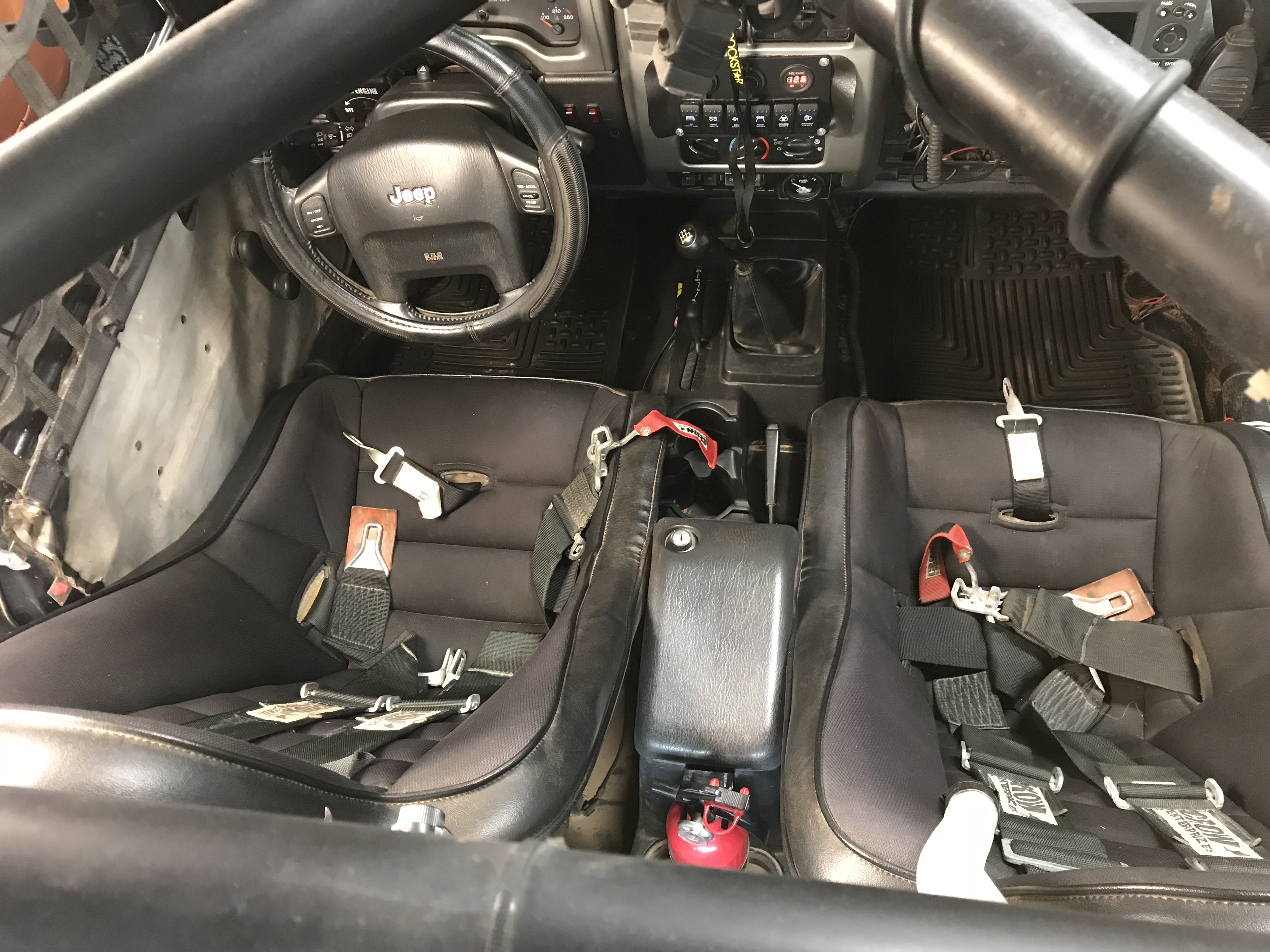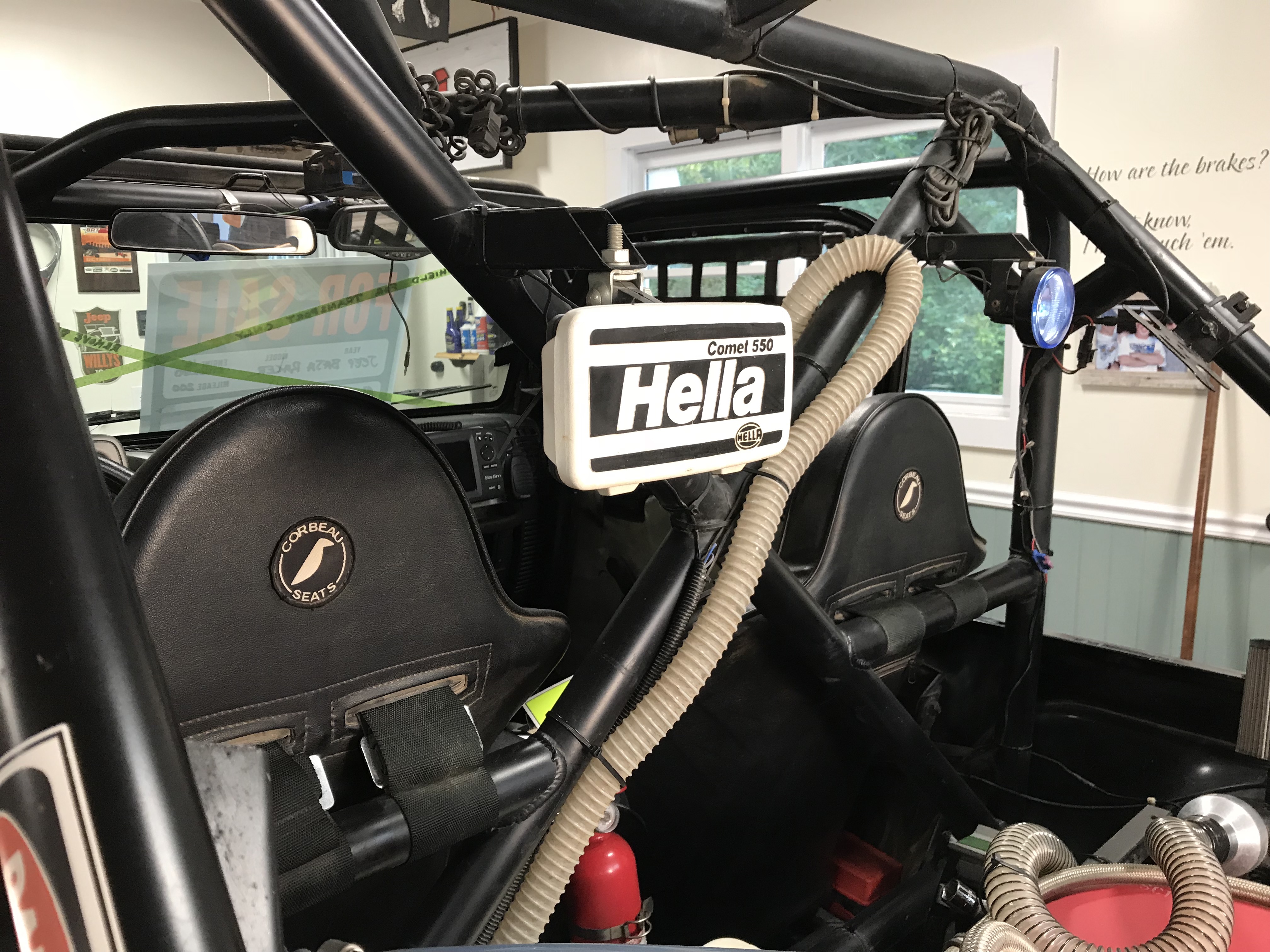Roll Cage Design
Its gonna save your life
So put the time in to designing it right, and check every weld. From high speed rollovers to the steep cliff drops of the Baja 500, you want to be sure the cage won't flex, bend or break in the wrong situation. You also want to pre-fit the cage with both riders in it to help position the top bars away from helmet impacts.
Stuff it in
You need a lot
It may seem that you're trying to stuff 10 pounds of poop into a 5 pound bag, and you are, but the rule requirements for SCORE, BITD, F1 and others dictate a lot of MUST HAVES on or in the vehicle. In addition, there are stipulations around those things as well. For instance, in off-road racing you need a yellow and blue light on the back—but they can't protrude past the plane of the roll cage down-tubes so as not to be knocked off in a roll.
Navigation
A map to win
The BITD races are pretty well marked. However, by the time you get there in lower class race trucks, the course isn't the only thing chewed up. Many times, the signage has been run over and no longer points the way. That's why a good mapping solution is needed. Unfortunately, iPads aren't reliable in the most remote places of a race--when you need clear navigation the most! Be sure you have something with a strong antenna.
GET COMFORTABLE
Its your ass, protect it.
Formula Drift races are pretty short. In 250 mile desert races, you can expect to be in the saddle for at least 5-7 hours depending on course type and average attainable speed. In a 500, you're there all day—up to 17 hours! Be sure to select seating and positioning that reduces physical stress and physical impact. We select suspension seats as an added level of absorption over the suspension.








